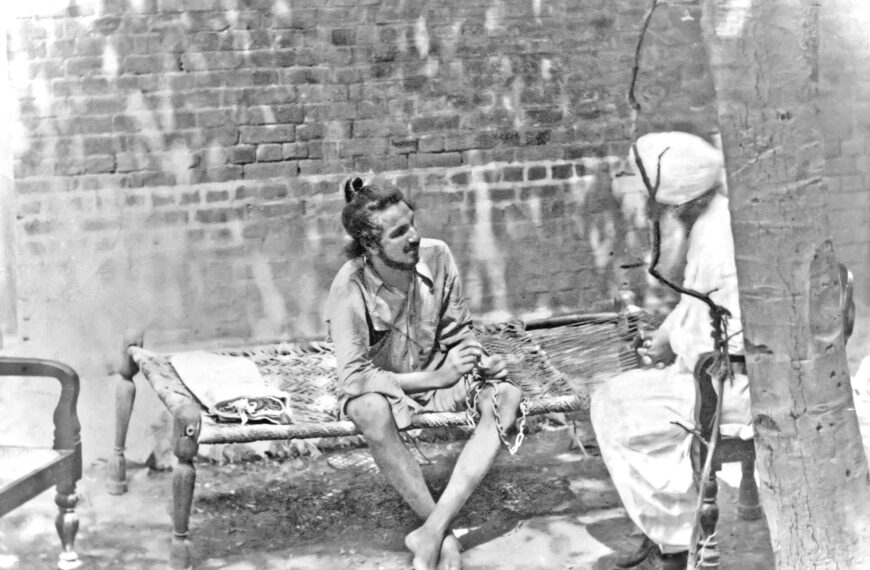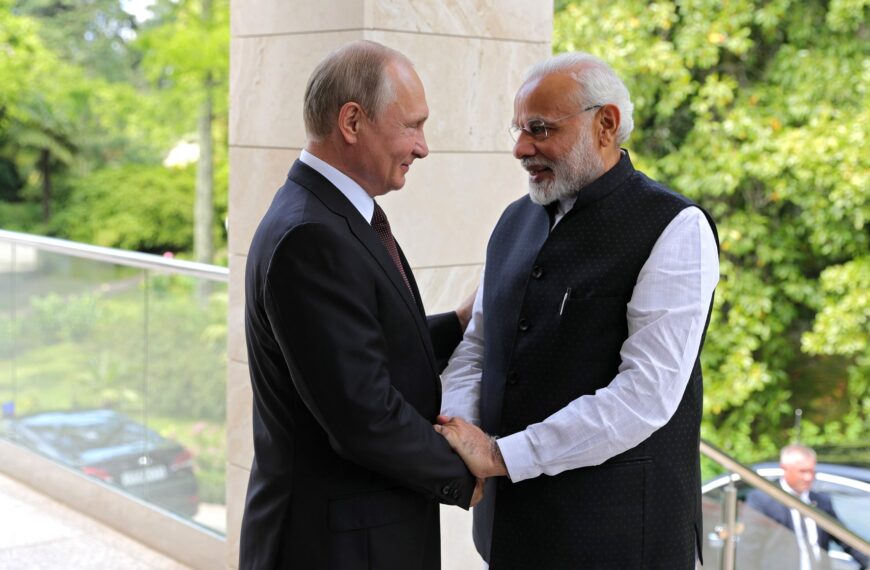India has once again demonstrated its engineering prowess by unveiling the world’s highest railway bridge over the Chenab River in Jammu and Kashmir. This monumental project is part of the ambitious Udhampur-Srinagar-Baramulla Rail Link (USBRL), which aims to connect the Kashmir Valley with the rest of the country through a seamless rail network. The bridge, along with the newly laid rail tracks, is not just a symbol of national integration but also a lifeline for the people of the region.
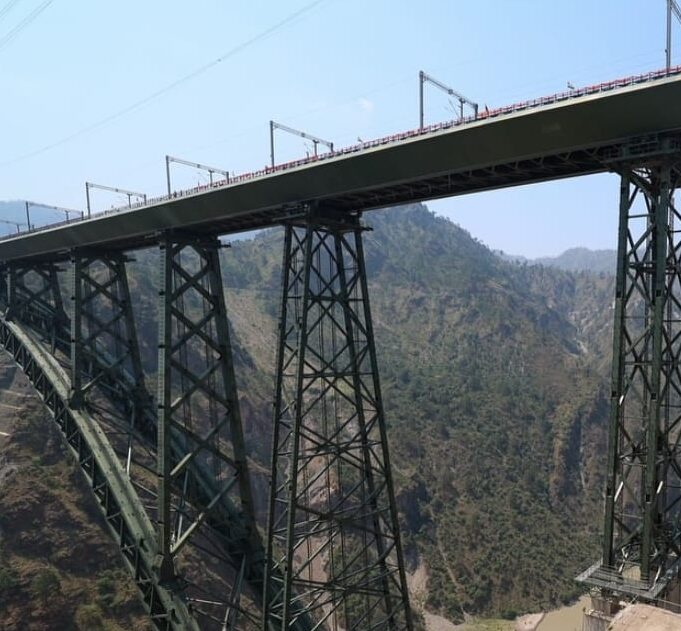
Chenab Bridge: The World’s Tallest Railway Bridge
The crown jewel of the USBRL project is the Chenab Bridge, which stands at a staggering height of 359 meters (1,178 feet) above the riverbed—35 meters higher than the Eiffel Tower. Spanning 1,315 meters, the bridge connects the Bakkal and Kauri regions of the Reasi district.
Constructed using over 30,000 metric tonnes of steel, the bridge has been designed to withstand earthquakes, high-velocity winds up to 260 km/h, and even terrorist threats. Its unique arch design and sophisticated technology make it an engineering wonder. It took over two decades to complete due to the challenging Himalayan terrain, security concerns, and weather-related disruptions.
Strategic and Socioeconomic Importance
The new railway link and bridge are strategically significant for both defense and civil connectivity. For the Indian Armed Forces, this provides a rapid and reliable means of transportation to forward areas, especially during emergencies. Until now, reaching Kashmir by rail was impossible; goods and military supplies had to be transported via the treacherous roadways prone to landslides and snow blockages.
From a civilian perspective, this project is set to revolutionize life in Jammu and Kashmir. Travel time between Jammu and Srinagar, which currently takes over 9–10 hours by road, will be significantly reduced. With safer, faster, and all-weather connectivity, tourism is expected to rise, boosting local economies in the districts of Udhampur, Reasi, Ramban, Kulgam, and Baramulla.
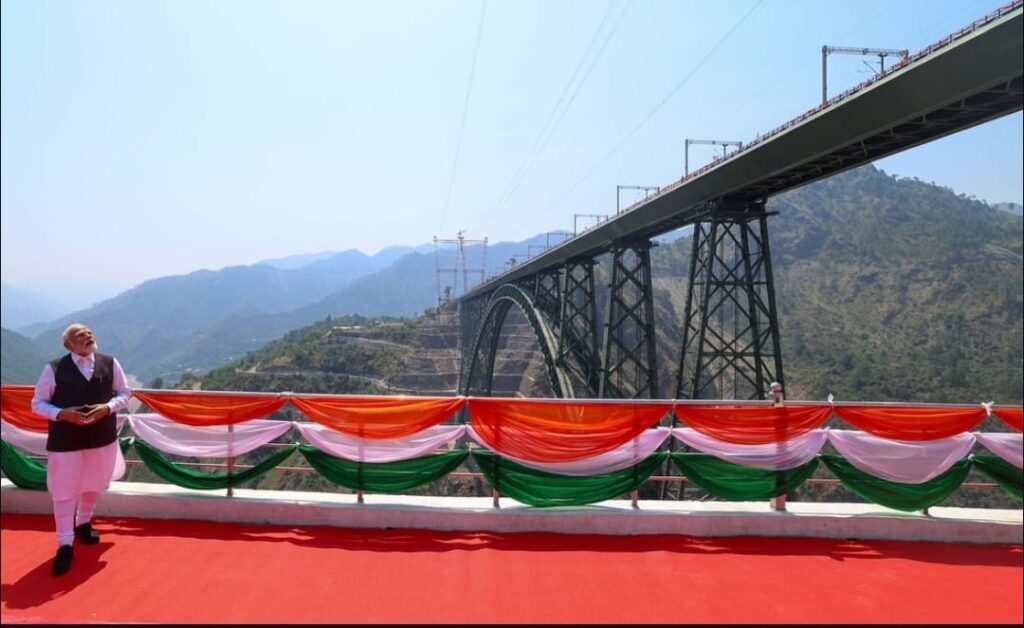
Modern Rail Infrastructure in Kashmir
In addition to the Chenab Bridge, new rail lines and stations have been developed under the USBRL project. Recently, Prime Minister Narendra Modi inaugurated several sections of the railway line in Baramulla, including Banihal-Khari-Sumber-Sangaldan sections, which include multiple tunnels and smaller bridges.
The newly laid tracks feature state-of-the-art facilities, including automated signaling systems, bio-toilets, energy-efficient lighting, and advanced weather monitoring. The tunnels, built through some of the toughest terrains in the Himalayas, offer both scenic views and safe passage through formerly inaccessible regions.
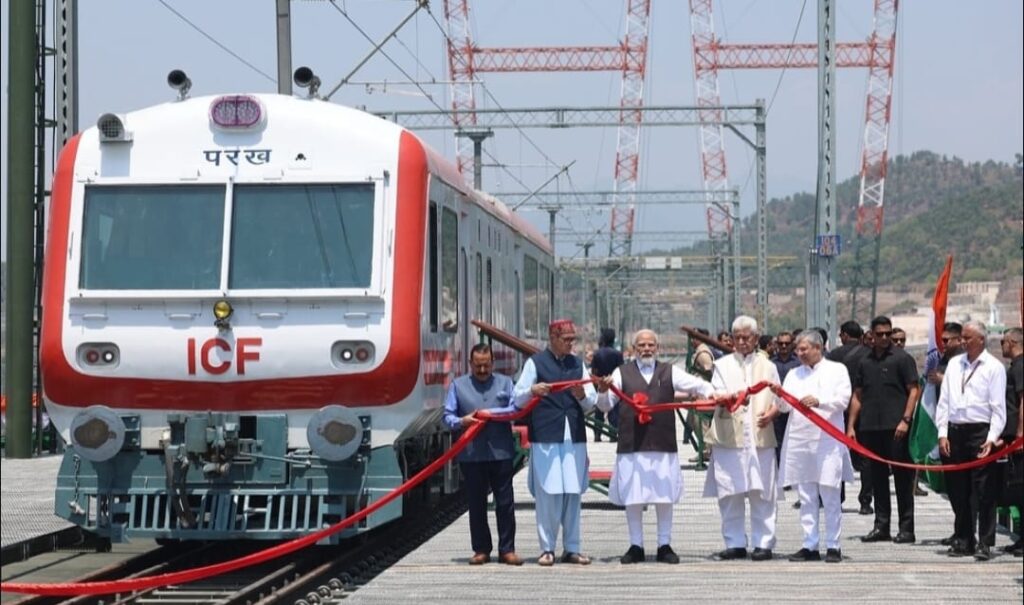
Boost to Local Employment and Economy
The construction of this rail link has generated thousands of direct and indirect jobs for local residents. Engineers, laborers, transport workers, and support staff from across India contributed to the success of the project, creating a sense of unity and progress.
Moreover, with the rail network now touching remote areas, local artisans, apple growers, saffron farmers, and traders will find it easier to transport goods to national markets. This will help in reducing transportation costs and increasing profitability, thereby improving the standard of living in rural areas.
Environmental and Engineering Challenges
Building in the Himalayan region presented immense challenges. The engineers had to deal with frequent landslides, shifting rock strata, and harsh climatic conditions. Special techniques like controlled blasting, rock bolting, and tunnel boring machines (TBMs) were used to ensure safety and accuracy.
To minimize environmental impact, the Indian Railways adhered to strict guidelines. Reforestation efforts, noise and dust control measures, and eco-friendly construction practices were implemented wherever possible.
The inauguration of the Chenab Bridge and the expansion of the railway network in Jammu and Kashmir mark a turning point in India’s infrastructure journey. It is more than just a bridge; it is a symbol of hope, unity, and progress for a region long isolated due to geography and politics. As the Indian Railways continues to break barriers—both literal and metaphorical—projects like these remind us of the power of innovation and national will.


